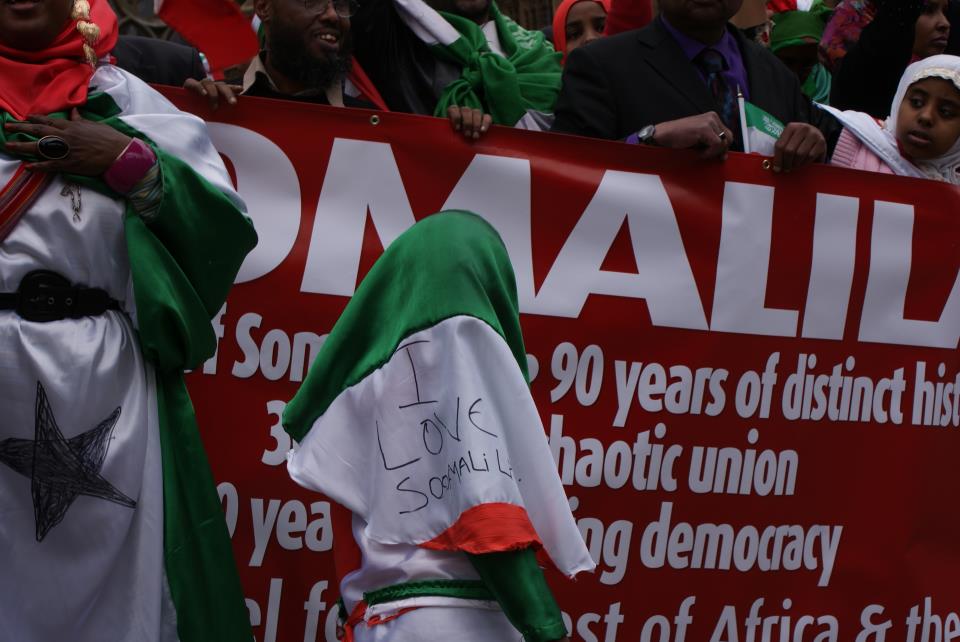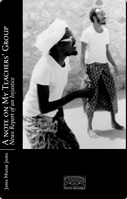11/11/2007: Submitted for publication via web
A critical review on “People on the Move”
by By Prof. Jama Adan Ali
Upon my close reading of the book, I have found it quite interesting and attractive. It begins with a scene of comfort rainfall and love. In his first encounter with the girl, Samir, only after short squabbles over the dirt spilled onto her dress by the wheel of his car which slipped into a pothole filled with water, had cleverly managed to court her and offer her a ride to their house. This was later ensued by a mutual love which developed by degrees and then reached into its heights. Also into the deep down recess of his heart was flourishing another love – love for his country. Samir exercised his love within an indigenous environment.
The author then twists the story. Here begins conflicts between the principle character, Samir, on one hand and external forces on the other. Samir enjoyed life, but only for a short while. Things turned ugly and unfavorable overnight. Sabrin defects because of jealousy and suspicions planted between them by another girl, and the loving power of his country and people is abruptly undermined by Gedi’s influence on migration to lands beyond the sea.
In the first case, Samir showed less resistance to keep or restore Sabrin. “…The thing that I don’t understand about my girl friend is that she is with some other man and I want to disappear.” He so simply gave way to a despair. His argument with Gedi over the issue of migration was nevertheless powerful and convincing, though, at the end of their debate, he surrendered or gave in. He repeated frequently that there was “no place like home to live”. “To tell you the truth, I like this country and I will always be.” He reasoned out why he wanted to stay and live in his country than go and migrate: “…I mean let us stay and trust our country. I believe if we study hard, work hard we can fly and touch the sky; building good future for all. I am begging you please, make up your mind and let us stay…”
Then not certain or sure of himself and wasn’t able to know how they will reach their destination or what could happen to them in the middle of their adventure, Samir merely accompanied with three boys of his age who were much bedeviled by the juvenile syndrome of Europe. The boys left Hargeisa in a strong, safari vehicle – Surfe – which smuggled them to Ethiopia. This trip was immediately followed by another which took them to The Sudan.
Here Samir’s vigorousness, energy or eloquence had abruptly subsided. He has been all along, since they left Hargeisa, quite, except when he was taking part in the conversations they shared during their journeys. There were no thrilling actions or risks or rather challenges that would require of him to react and appear as a hero.
One important and noticeable feature in the succeeding events of the story is apparently the quickness or rather the frequencies of movements or travels from one place to another; they were stopovers only.
In their third leg of the adventure, the boys, after a brief stay, probably for a night or two in Khartoum, had launched another trip to Libya en route the Sahara Desert, but had unfortunately their Toyota broken in the middle of the desert. While the driver and his assistant were busy repairing the vehicle, the boys waited impatiently and in vain at a tree near the car, for the outcome of the repairing activity. It was getting dark and was also dangerous and frightening all around the area. The wind was blowing and was making fearful noises over heaps of infinite stretches of sand dunes and, worst of all, not a sign of life was to be seen or heard within their vicinity. The author depicts a dreadful situation and an atmosphere of uncertainties and suspense. The reader is prompted to ask the question: “Will they perish in that vast, uninhabited land or survive and get across it in peace to their immediate destination – Libya - ?” In that particular situation, it was Gedi, not the principal character, Samir, who spelled out the boys some of the fear and clouds of uncertainties that loomed over in darkness by narrating similar adventures he experienced before.
The arrival in Libya was peaceful, but their stay in the country was never long, however. In a few days’ time the boys with another team of illegal infiltrators had boarded two boats sailing for Europe. The boats were overloaded with passengers though they were not the type made to go far into the sea or carry passengers from place to place. They were small and meant only for recreational purposes. The weather changed and severe storm hit the boats causing one to sink and leave its passengers floating or dying in the sea.
In this part, the development of events or episodes is rather striking and provoking emotions. It is dangerous and fatalistic. The author has employed a unique style to involve the reader. It is full of thrilling actions and challenges. It is not, however, Samir but his friend Gedi who survived the wreck of the drowned boat and painfully to grope for Samir’s hand to save his life.
The concluding part of the story, the arrival of the boys in London, sheds light on events pertaining to travelers’ views on Europe, in general and more so on the impact of white man’s behavior and culture on Somalis living in Europe, either as residents or as refugees. Samir’s role as the principle character is reactivated. He and his friend, Gedi, had immediately reacted to the new environment, which was entirely different from the one they had experienced in Hargeisa. Europe is highly developed, but life is really hard and not easy to adjust for the foreigner.
When Samir and his friend stayed for a short time, they applied for a job in a company but were refused, because they didn’t know the language nor had driving licenses should they were given the jobs. They weather was bad, too, and most of their mates or friends were lazy to work or go to school to study. They rather stayed indoors watching movies or playing video games to pass time, in upstairs apartments located in inferior areas of the city. Worst of all, these people ignored their centuries old traditions and adopted naively the life style of the white man.
Despite all these difficulties Samir studied and went back home. He married Sabrin and lived comfortably in this country.
It is as though the author is trying to contrast or highlight the difference in cultures between Europe and Somaliland. It was Samir who carried out this mission and experienced the differences between the two cultures. It was also him who was dissatisfied with the vulnerabilities of Somalis towards the cultures of the white man. Hence, it would appear from here that the author was primarily writing on Tahrib (People on the Move), but had somewhere towards the end of the story tackled exhaustively on another important topic which might have been buried inside him, but had unexpectedly surfaced in the story and had marvelously dominated the story and subsequently minimized the effectiveness of the title – (People on the Move).
Finally, I am very much impressed with the language and style which the author has used, and the effectiveness of his power to put across his message to his audience.
|


